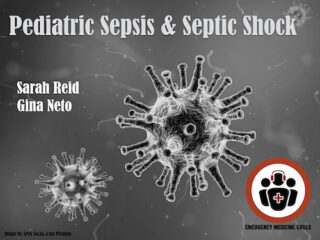Journal Jam 1: Age Adjusted D-dimer with Jeff Kline and Jonathan Kirschner
In this first ever episode of the Journal Jam podcast, a collaboration between EM Cases, Academic Life in EM and The Annals of Emergency Medicine's Global Emergency Medicine Journal Club, Teresa Chan and I, along with Jeff Kline, Jonathan Kirschner, Anand Swaminathan, Salim Rezaie and Sam Shaikh from ALiEM, discuss the potential for Age Adjusted D-dimer to rule out pulmonary embolism in low risk patients over the age of 50. We discuss 4 key questions about the ADJUST-PE Study from JAMA in March 2014 including: Would you order a CTPA on a 60 year old woman with an age adjusted D-dimer of 590 ng/L? The problem until now has been that the older the patient, the more likely the D-dimer is to be positive whether they have a PE or not, so many of us have thrown the D-dimer out the window in older patients and go straight to CTPA, even in low risk patients. If you are a risk averse doc, this strategy will lead to over-utilization of resources, huge costs, length of stay, radiation effects etc; and if you’re not so risk averse, then you might decide not to work up the low risk older patient at all and miss clinically important PEs. expert peer reviewFor all the questions discussed on this podcast, the original Google Hangout interview from which this podcast was based, and the crowd sourced opinions from around world, visit the ALiEM website. Many thanks to all the talented people who made this podcast possible. Together, we're smarter!










